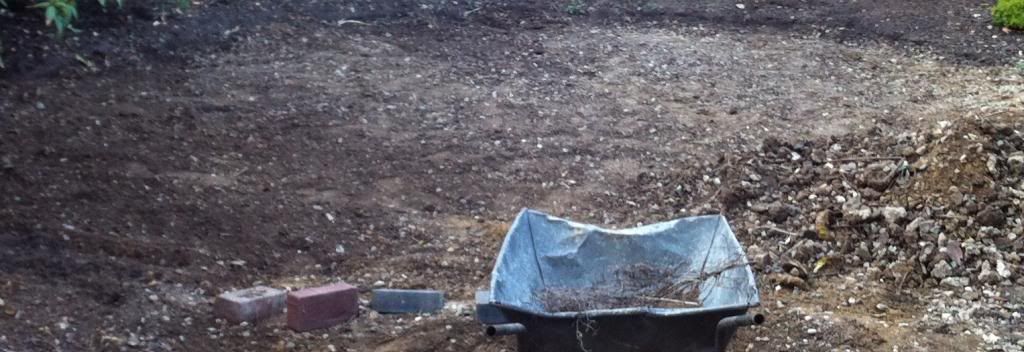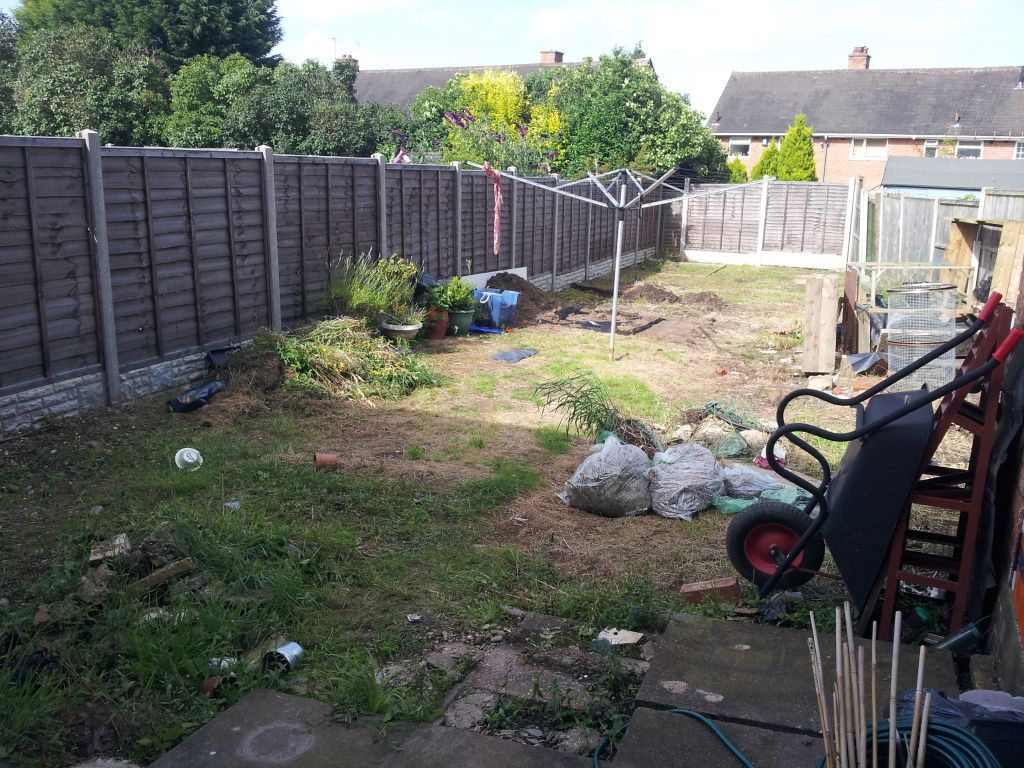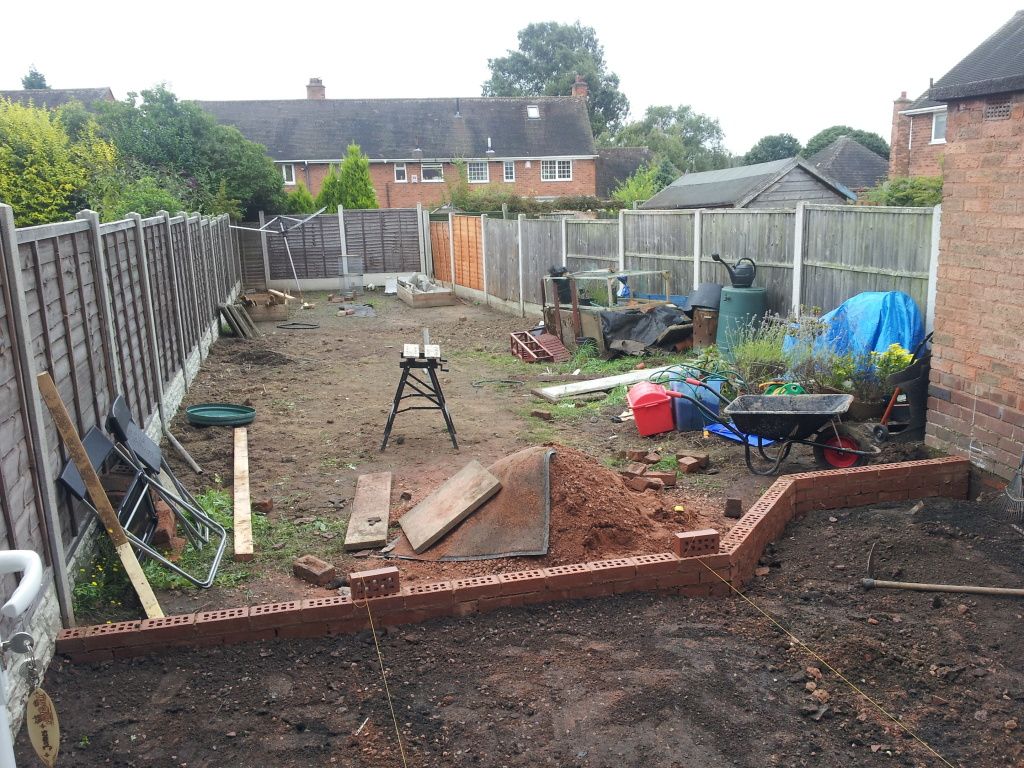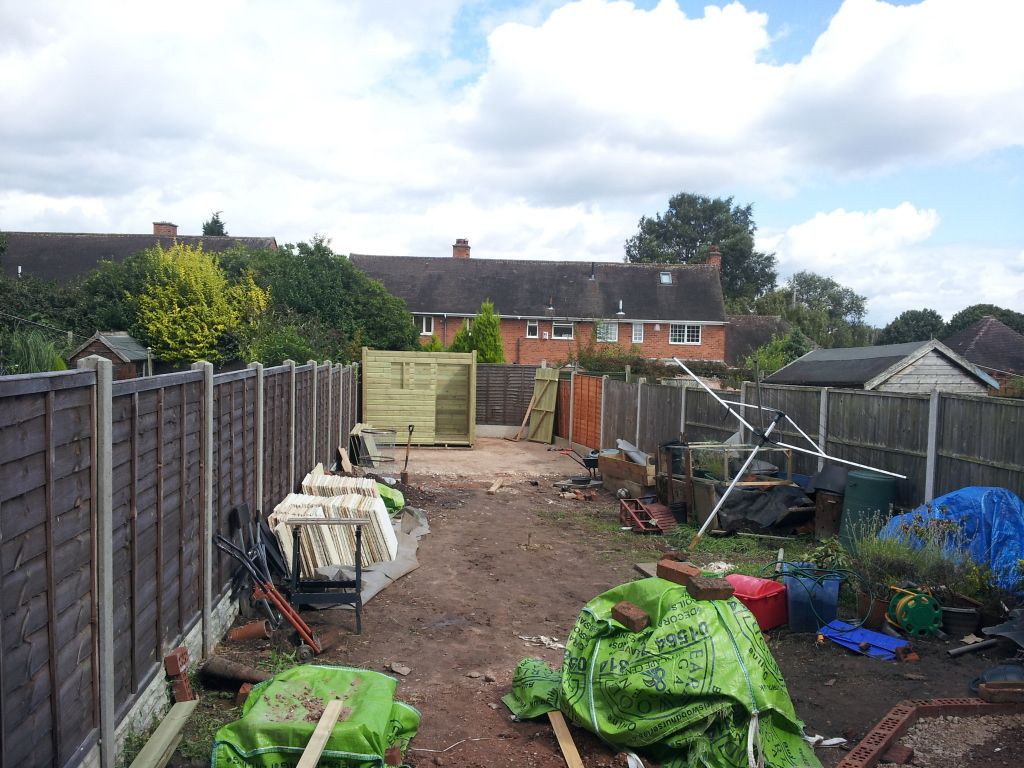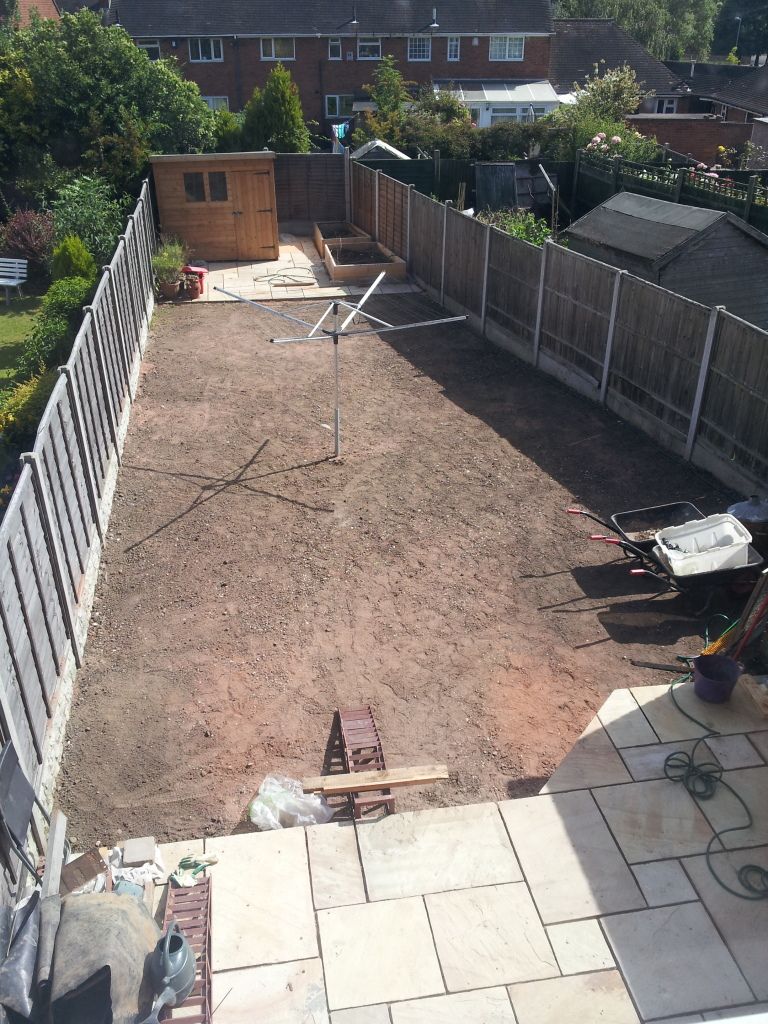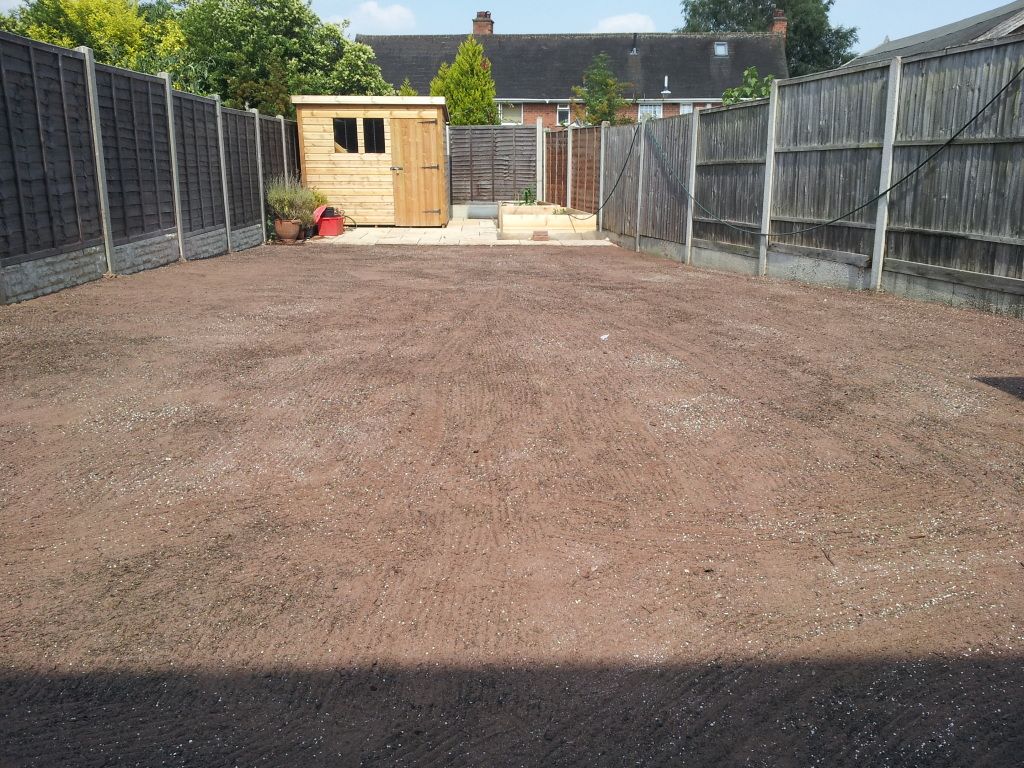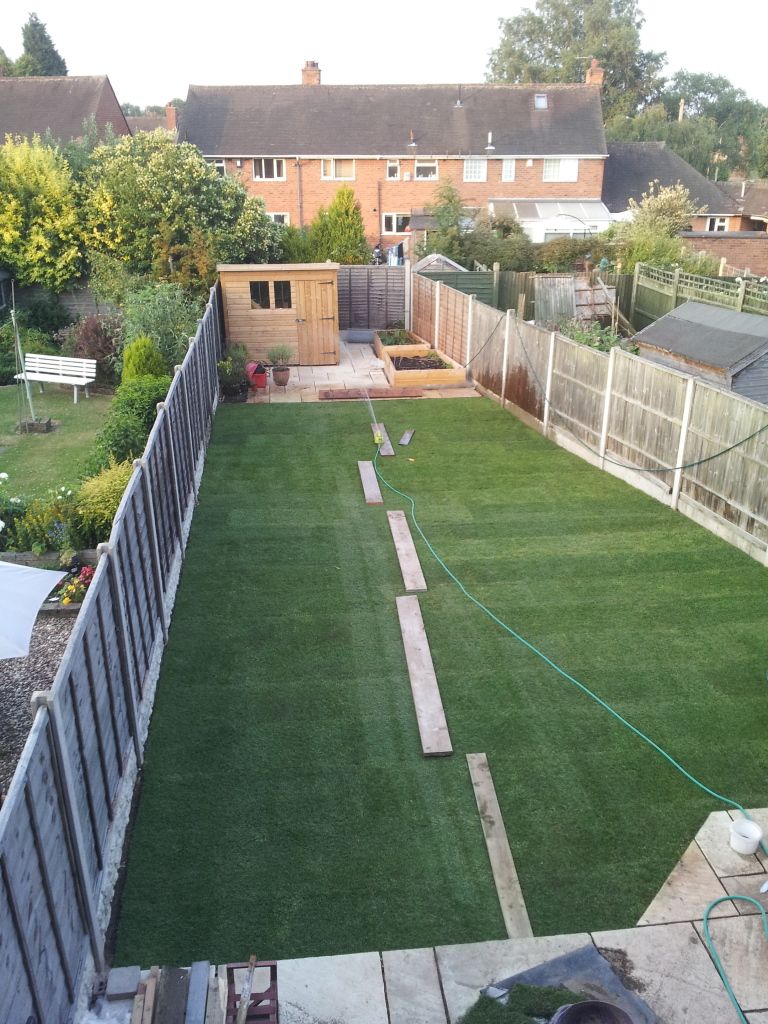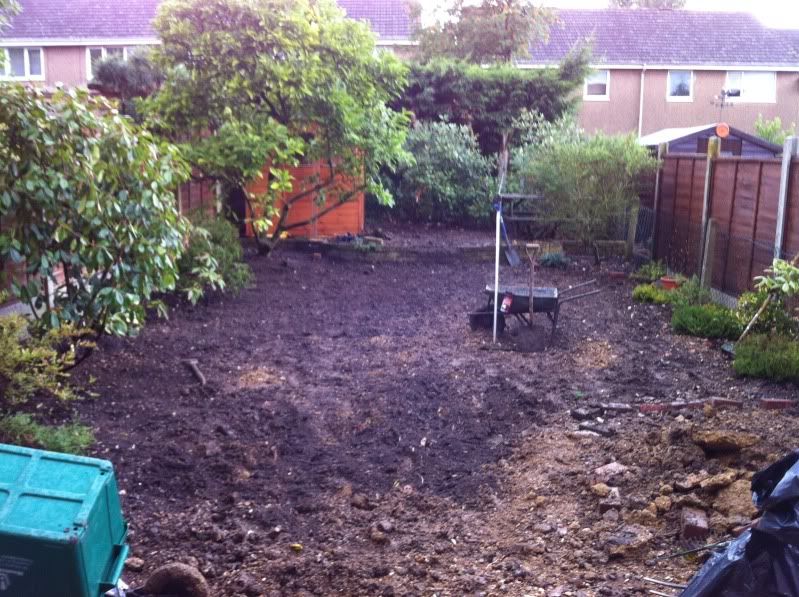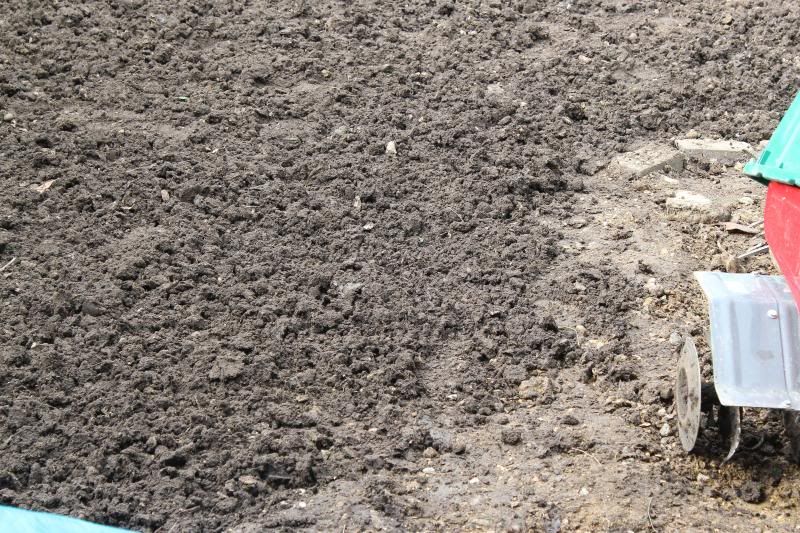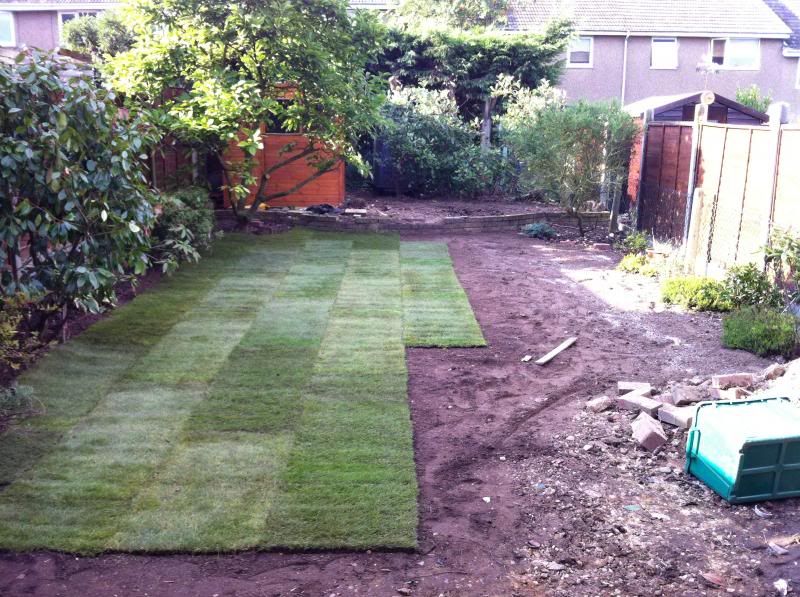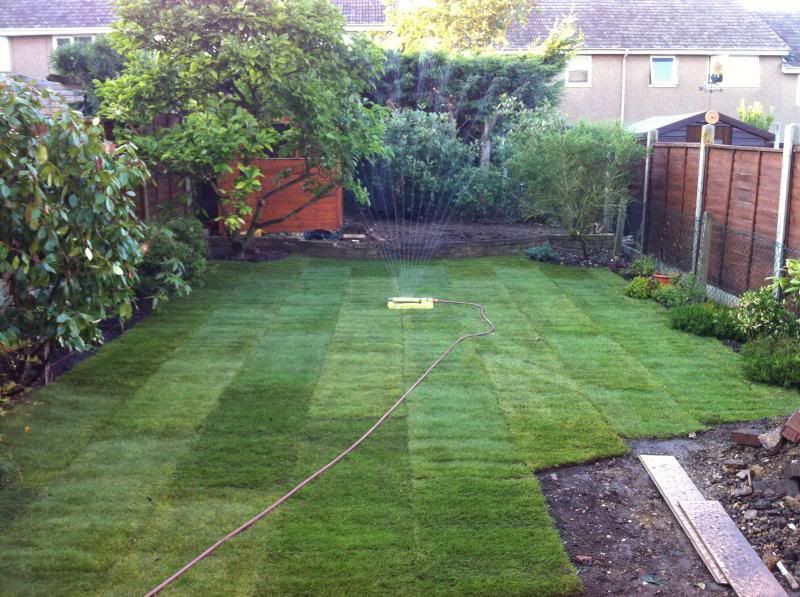Hi All,
This is my first post to DIYnot. My girlfriend and I have just bought our first property. For the most part its in fairly good condition, just tatty and in need of a bit of an update. Some of our biggest tasks will be some addition of power sockets and light switches, relocation of a radiator and repair/replacement of floor boards. However the first one to be tackled, and the subject of this post, is the garden.
When we bought it it had no grass, just a keyhole shaped patio with plant boarders, and a raised section at the back overgrown with bushes. I have since laid a slab base and build a shed on the raised section (using slabs from the patio) and the next step is to clear the rest of the patio and lay down turf, leaving some slim borders down each side of the garden.
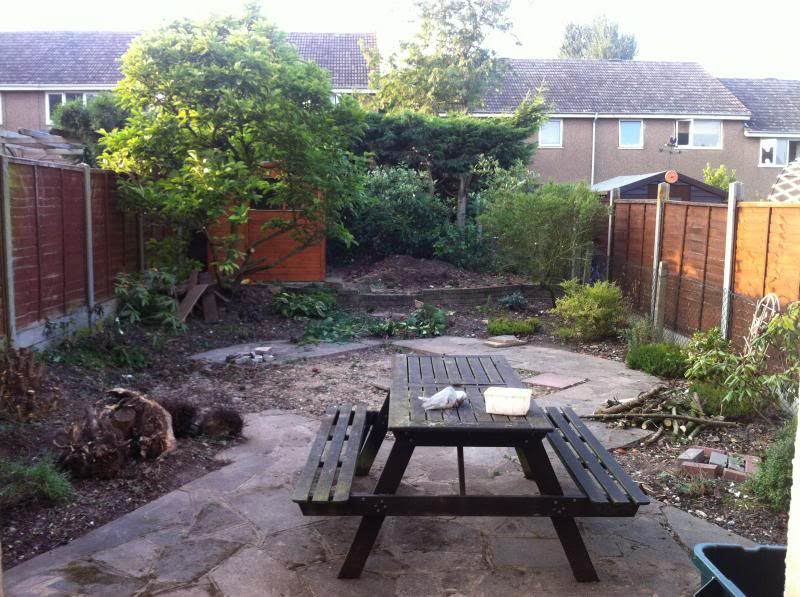
I have started raising the patio, and the slabs have been laid on what seems to be a mix of small ballast stones, sharp sand and dry cement. Clearly not ideal for supporting the growth of grass.
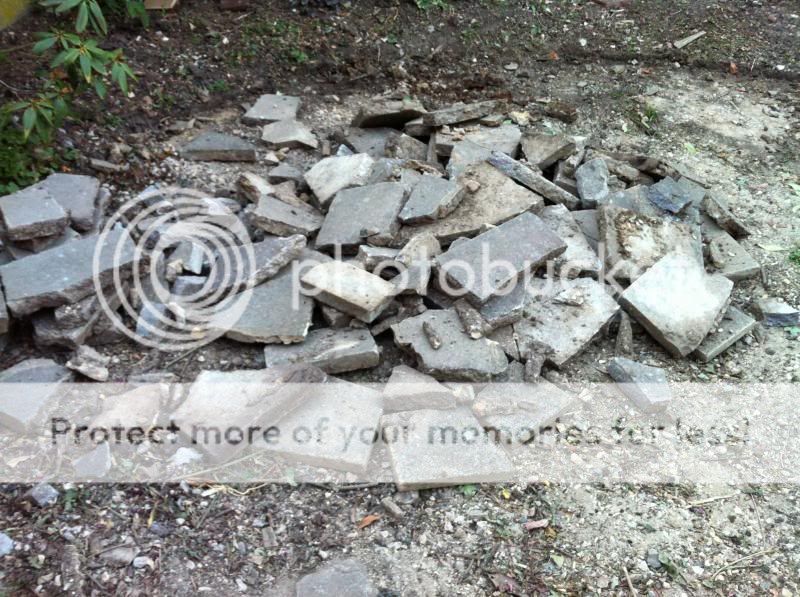
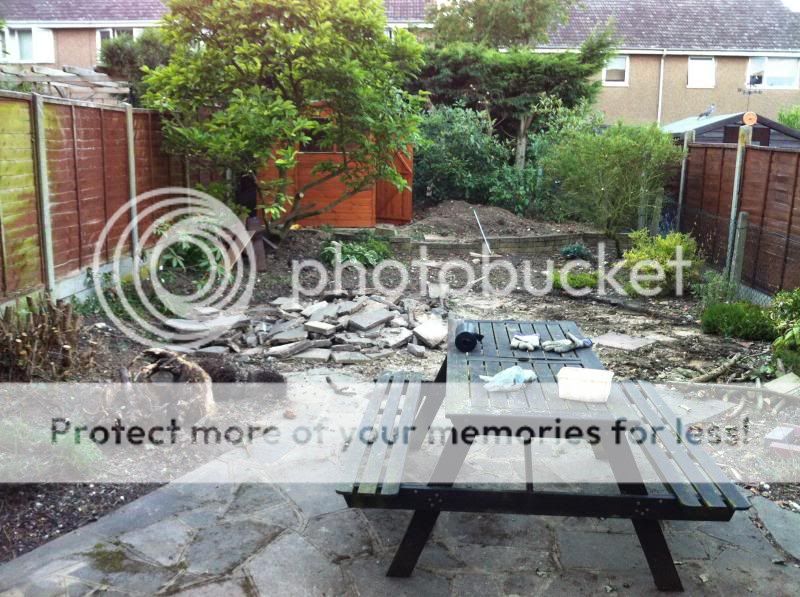
I have quite a large amount of soil that was moved when levelling for the shed base, the piles can be seen in the first picture, to the right of the shed, and under the tree on the left.
My question is, based on experience, what do I need to do to prepare the ground for laying turf? I want to lay about 45m^2 of grass and imagine a fair amount of levelling will be required, especially if a large amount of clearing is required from underneath the patio. Will this require purchase of more topsoil, should I buy some form of fertilizer to mix in etc. I'm very comfortable with DIY but gardens are not something I have any experience of! Any and all help is appreciated.
This is a rough idea of the intended final result -
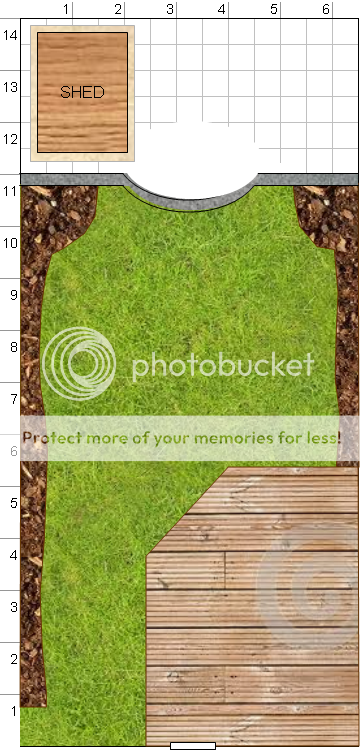
PS: If anyone wants any crazy paving in the herts area - its all up for grabs providing you can collect!
This is my first post to DIYnot. My girlfriend and I have just bought our first property. For the most part its in fairly good condition, just tatty and in need of a bit of an update. Some of our biggest tasks will be some addition of power sockets and light switches, relocation of a radiator and repair/replacement of floor boards. However the first one to be tackled, and the subject of this post, is the garden.
When we bought it it had no grass, just a keyhole shaped patio with plant boarders, and a raised section at the back overgrown with bushes. I have since laid a slab base and build a shed on the raised section (using slabs from the patio) and the next step is to clear the rest of the patio and lay down turf, leaving some slim borders down each side of the garden.

I have started raising the patio, and the slabs have been laid on what seems to be a mix of small ballast stones, sharp sand and dry cement. Clearly not ideal for supporting the growth of grass.


I have quite a large amount of soil that was moved when levelling for the shed base, the piles can be seen in the first picture, to the right of the shed, and under the tree on the left.
My question is, based on experience, what do I need to do to prepare the ground for laying turf? I want to lay about 45m^2 of grass and imagine a fair amount of levelling will be required, especially if a large amount of clearing is required from underneath the patio. Will this require purchase of more topsoil, should I buy some form of fertilizer to mix in etc. I'm very comfortable with DIY but gardens are not something I have any experience of! Any and all help is appreciated.
This is a rough idea of the intended final result -

PS: If anyone wants any crazy paving in the herts area - its all up for grabs providing you can collect!




